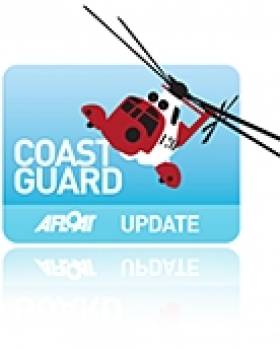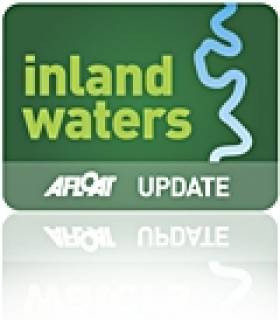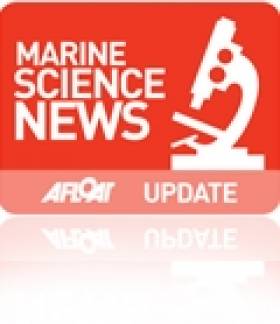Displaying items by tag: Funding
Coast Guard, RNLI Funding Escapes Cuts
#COASTGUARD – Funding for the Coast Guard and the RNLI will be protected at existing levels in 2012, Minister for Transport, Tourism & Sport Leo Varadkar confirmed today (Saturday). Speaking during a New Year's Eve visit to thank volunteers at the Coast Guard Station at Howth, Co. Dublin, Minister Varadkar also confirmed that the Coast Guard would remain within the Department of Transport, Tourism & Sport.
Minister Varadkar said: 'The Coast Guard performs an essential role all year round. I would like to extend my sincere thanks to every member of staff and volunteer for their efforts during 2011. I would also like to express my gratitude to the families of all the rescuers who make it possible for the volunteers to provide this 24 hour commitment throughout the year'.
Coast Guard Director Chris Reynolds confirmed that 2011 was one of the busiest years for the Coast Guard since its foundation. The Coast Guard responded to nearly 2,000 incidents this year, resulting in 163 lives being saved and over 3,300 persons assisted. The Coast Guard helicopters alone performed 551 missions during the year. Mr Reynolds said that staying within the Department of Transport, Tourism & Sport would facilitate the Coast Guard in the further development of maritime safety in Ireland, while also retaining its existing networks.
Minister Varadkar confirmed that the Coast Guard will receive €4.37 million for current purposes again this year, not including the helicopter service, and the RNLI annual grant of €150,000 will also be retained in 2012. The Minister has also allocated capital funding to allow the Coast Guard's aging fleet to be refreshed with new vessels over the next two years. New vessels have already been allocated to Coast Guard Stations at Achill, Bunbeg, Killala, Greencastle, Doolin and Killaloe.
The Minister confirmed that he has given the OPW the go-ahead to tender for a new Coast Guard Volunteer and Pollution Response Centre in Killybegs, Co. Donegal, and he re-confirmed his commitment to proceed with a similar station in Doolin within the life of the capital expenditure programme. 2012 will also see a significant improvement in the provision of helicopter rescue services with the arrival in Ireland of the new S92A Coast Guard helicopter in Shannon at the end of January.
Meanwhile, the Coast Guard's second national telecommunications network has been commissioned, providing a completely independent back-up service for the Coast Guard ship-to-shore communication network.
Mr Reynolds said: 'Ireland is a maritime nation which has rights over an area of seabed 10 times the size of Ireland. Ninety nine per cent of our trade goes by sea and it's no surprise that most of our population lives within 30km of the coast. In carrying out our goal to prevent, prepare and respond, the men and women of the Coast Guard staff, its volunteers, our helicopter crews and our partners in the Navy, Air Corps, RNLI, CRBI and mountain rescue, have continued to provide a world-class service. This has only been possible through the incredible service offered by locally-based volunteers nationwide and the commitment of this Government to maintain these essential front line services in difficult times'.
Salmon Conservation Scheme Extended to 2012
#ANGLING - Inland Fisheries Ireland's Salmon Conservation Scheme has been extended into 2012, with funding increased to a total of €200,000.
The pilot scheme will facilitate the rehabilitation of salmon stocks, giving priority to rivers below their conservation limit which have the greatest prospect of recovery.
Applications are now being invited for salmon conservation projects, to a maximum value of €10,000 per project. Applicants must outline the benefits of the project, the ability to plan and complete the project, and value for money. Any statutory approvals necessary, such as planning permission, must be in place.
Examples of schemes that can be funded include: fish passage improvement; spawning enhancement, instream structures such as weirs and deflectors; river bank protection; tree pruning and planting; and removal of invasive species.
Minister for Communiations, Energy and Natural Resources, Pat Rabbitte, commented: "This scheme has been proven to enhance habitat, knowledge and ultimately the wonderful angling and commercial fisheries we enjoy in Ireland adding benefit to local economies."
Application forms are available from the Inland Fisheries Ireland website HERE.
The closing date for applications is 31 March 2012.
Minister Opens White River Fishery Enhancement Project
#ANGLING - Minister of State Fergus O'Dowd was on hand at the opening of the White River enhancement project in Dunleer, Co Louth earlier this month.
The €32,000 project was funded by the Louth Leader Partnership, with works were carried out by the Dee and Glyde Fishing Development Association and the Dundalk district staff of Inland Fisheries Ireland.
The White River, a tributary of the River Dee, is considered hugely important as a spawning and nursery area, and it has already seen significant improvements in the levels of juvenile salmon and trout.
Instream enhancement works began in 2006, supervised by Inland Fisheries Ireland, and included the introduction of new gravel, weirs, deflectors and spawning beds which have helped the White River to achieve its potential in terms of fish numbers.
Speaking at the launch, Inland Fisheries Ireland CEO Dr Ciaran Byrne said: "The work that I have seen on the river is fantastic and a credit to all involved."
IFI assistant inspector in Dundalk, Ronan O’Brien, said project was based on restoring the natural features of the river.
He added that the programme was a great recognition of the work carried out by the Dee and Glyde Fishing Association, and that it had strengthened links with local business and development groups and could be used as a template for other projects in the area.
#FERRY NEWS - A cross-border project to develop ferry services for island and remote communities of the Irish and Scottish coastlines has received funding in the sixth round of the European Regional Development Fund (EDRF).
A grant of £450,000 (€540,000) has been allocated to procure the world's first ever hybrid RORO ferry for operation in Scotland, following the completion of the INTERREG funded Small Ferries Project.
The project - a cross-border partnership between Caledonian Maritime Assets Limited and administrations in Ireland and Northern Ireland - produced common designs and procurement strategies for a fleet of small ferries which could be used to serve remote coastal communities.
As previously reported on Afloat.ie, five Scottish coastal routes (and three Irish routes) were examined as part of the Small Ferries Project report published in September last year.
Arising from this, Scotland will see the next step in the project by hosting the world’s first hybrid RORO ferry, designed for use on short crossing routes around the Clyde esturary and Hebrides.
The EDRF funding will also be used to develop the corresponding shore infrastructure to enable the ferry to recharge in port.
The first vessel is expected to enter service in Spring 2013.
Shillington's Quay in Portadown Set for Revamp
Shillington's Quay in Portadown is set for redevelopment thanks to a significant grant from the European Union.
The Portadown Times reports that half of the borough's £200,000 (€230,000) funding will be used for a new floating jetty and environmental improvements for the Newry Canal quay area, which was last used as a working port in the 1930s.
A total of £2.5 million (€2.9 million) has been earmarked by the EU for promoting tourism in the cross-border East Border Region, which aside from six Northern Ireland council areas also includes the Irish counties of Louth, Meath and Monaghan.
Other improvements to marine and waterway facilities include a £125,000 (€145,000) investment for the Eisenhower Pier in Bangor, on the southern side of Belfast Lough.
The Portadown Times has more on the story HERE.
Record Dolphin Strandings 'Inexplicable'
There is growing concern over the rising number of dolphin deaths along Ireland's south coast, the Irish Examiner reports.
The Irish Whale and Dolphin Group (IWDG) announced that a record 19 common dolphins washed up dead in Cork, Waterford and Wexford in January and February of this year alone - 17 more than in the same two months of last year.
Padraig Whooley of the IWDG said the deaths were "inexplicable", noting that there were no obvious signs of injury.
He added that the IWDG did not have the resources or funding to carry out the necessary post-mortems to determine the cause of death, which could be viral in nature.
The Irish Examiner has more on the story HERE.
Scientists Await Data from Galway Wave Energy Test
The Irish Times reports that a number of European universities and research centres are eagerly awaiting the data from the latest wave energy test buoy deployed in Galway Bay.
Cork company Ocean Energy Ltd is behind the latest test and research platform, co-ordinated by the hydraulics and marine research centre at University College Cork.
The scheme has €4.5 million in funding approved by the EU and commissioner for research and innovation Máire Geoghegan-Quinn.
A recent study for Sustainable Energy Ireland suggests that ocean-derived energy could generate €9 billion in income and thousands of jobs in the next 20 years.



































































